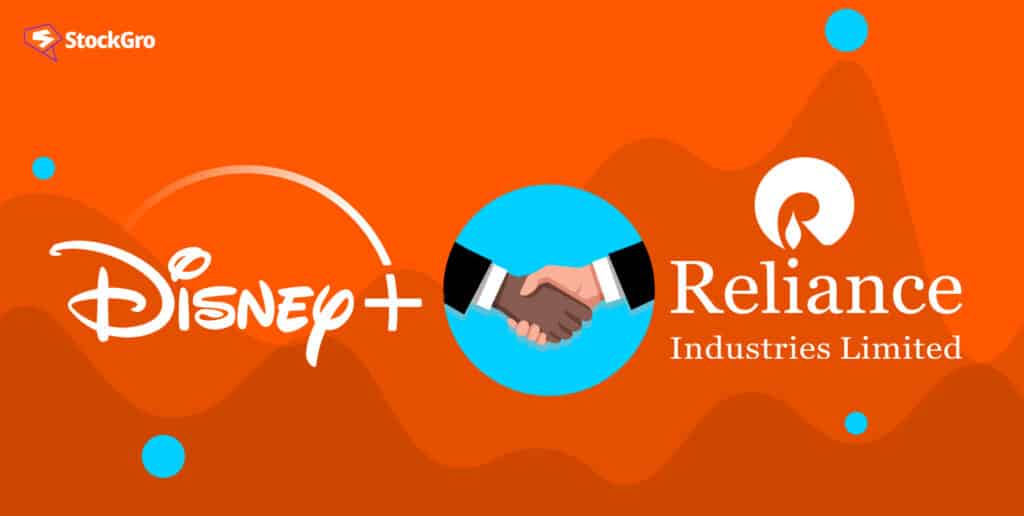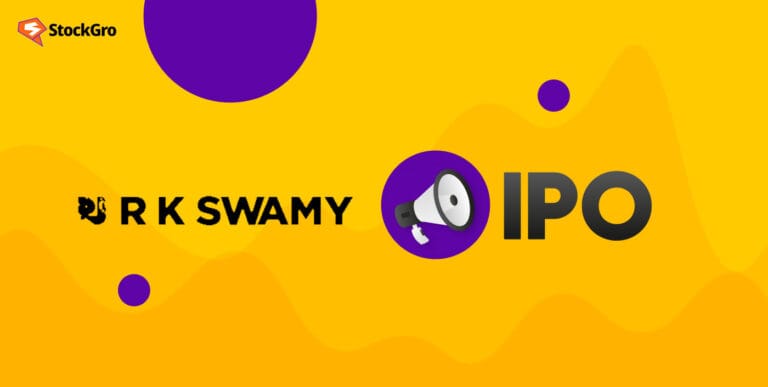
The two biggest giants in India’s media and entertainment space – billionaire Mukesh Ambani’s Reliance Industries and the worldwide media titan Disney – have joined forces in a historic $8.5 billion merger deal to take the Indian market by storm.
This merger has the potential to make Reliance India’s largest media company, surpassing competitors.
That said, let’s look at the Jio-Disney merger, for the Reliance media and entertainment space in India, with a focus on Reliance Industries’ financials and investment prospects.
About Reliance Industries Ltd.
Reliance Industries was founded by Dhirubhai Ambani in 1957 as a yarn trading business in Mumbai. It went public in 1977 and, over the next few decades, established itself as one of India’s most successful companies, expanding into petrochemicals, oil refining, and telecommunications.
Key milestones include commissioning the world’s largest grassroots refinery complex in Jamnagar in 2000, entering the telecom industry with the launch of Reliance Jio services in 2016, and becoming the first Indian company to reach a market capitalization of over $200 billion in 2020.
Under the leadership of Mukesh Ambani, who became Chairman and MD in 2004, Reliance has forged major partnerships with global tech giants like Meta, Google and Intel as it continues to grow.
Reliance Media Works started out as Adlabs Films Limited in 1975, started by Manmohan Shetty. Adlabs was bought by the Reliance ADA Group in 2005 and changed its name to Reliance MediaWorks Limited in 2009.
Also read: Jio Financial Services: Disrupting the insurance and AMC markets
Reliance Disney Hotstar merger: A $8.5 billion deal
Reliance, its subsidiary Viacom18, and Disney are combining their media companies in India, which is set to become the biggest media empire in the South Asian region.
On Wednesday, February 28, the media businesses of Reliance Industries Limited (RIL), run by billionaire Mukesh Ambani, and Walt Disney, a worldwide media giant, announced that they had signed final agreements for their merger. This would create an entertainment powerhouse worth ₹70,352 crore ($8.5 billion).
In a joint statement, the two companies said that Mukesh Ambani-led Reliance would invest $1.4 billion into the combined organisation, which will give it a 63% interest.
Advisory and financial services for Reliance and Viacom18 came from Goldman Sachs. For Disney, Raine Group and Citi Group served as financial consultants.
In India’s $28 billion media and entertainment industry, Ambani will be able to surpass competitors like Sony, Zee Entertainment, and Netflix thanks to the merger.
Key highlights of the merger
- Specifics of RIL-Disney’s ownership stake
In the merged company, Reliance and its subsidiaries would own 63.16%, with Disney owning the remaining 36.84%. According to a statement from Reliance Industries, the joint venture would be jointly owned by RIL (16.34%), Viacom (46.82%), and Disney (36.4%).
- Reliance will spend ₹11,500 crore in OTT industry
With an investment of ₹11,500 crore, Reliance has also committed to the joint venture to expand the OTT industry. By acquiring Disney-Star India’s content collection and using its expertise in sports broadcasting, the merger would also assist Reliance in strengthening its Jio Cinema streaming service.
- Specifics of the JV channel
If the deal goes through, it will make the company the biggest in the Indian media, entertainment, and sports industries. It will have over 100 shows in multiple languages, two of the top OTT streaming services, and 750 million viewers throughout India.
- Background on the deal
In 2019, Disney paid $71 billion to purchase the global assets of 21st Century Fox, which included the streaming service Disney Hotstar and the Star TV networks.
In 2020, they made cricket on Hotstar a subscription service. Disney was hopeful that they could achieve 100 million subscribers within a few years after securing the streaming rights to the Indian Premier League (IPL).
But that was not the case. In October 2022, there were 61.3 million Hotstar members; by December, 23 million had departed as Reliance acquired the rights to watch the Indian Premier League for $2.9 billion and streamed it for free.
Management believes Reliance’s knowledge of the Indian market and customers would make it one of the top media businesses alongside Disney.
Reliance Media Works’ competitors
Some of the competitors of Reliance Media Works as of February 29, 2024, ranked by market capitalisation (₹ cr.) are:
- Zee Entertainment Enterprises Ltd. (15,243)
- Sun TV Network Ltd. (23,980)
Also read: Connecting communities: A mobile broadband case study
Financials of Reliance Industries
| Metric | Value |
| Market capitalisation (₹ Cr.) | 1,974,119 |
| Book value per share (₹) | 1,213.66 |
| Dividend Yield | 0.31 |
| ROCE | 9.14 % |
| ROE | 9.31% |
| Face value (₹) | 10 |
Investing prospects
Pros
- Mukesh Ambani is a powerful advocate of Reliance Industries and has shown his ability to innovate and disrupt existing markets, such as telecom and retail, by launching Jio and JioMart.
He has also announced his plans to invest $75 billion in green energy over the next fifteen years, aiming to become a net-zero carbon company by 2035.
Reliance Industries has a significant market share and competitive advantage in its core businesses, such as Jio, Reliance Retail, and Reliance Petroleum. Jio is the largest telecom operator in India.
- With around 37.1% of India’s wireless network customers as of the end of 2022, Reliance Jio was by far the market leader. Within that time frame, the company had more than 424.5 million members.
With the addition of 4.22 million subscribers in December 2023, the overall number of subscribers for Jio reached 470.29 million.
Jio provides a variety of digital products like JioTV, JioCinema, JioSaavn, and JioMeet, in addition to affordable and reliable internet and telephone services. By FY26, when it is anticipated that its revenue market share will rise to 47%, Reliance Jio is expected to have more than 500 million subscribers.
Cons
- Reliance Industries is vulnerable to legal action as it operates in a highly regulated and sensitive industry, such as oil and gas.
- Reliance Industries is exposed to fluctuations in commodity prices, exchange rates, and demand cycles, which can affect its profitability and cash flow.
- Reliance Industries faces intense competition from domestic and international players in its various segments, such as telecom, retail, and media. The company also faces competition from OTT players, such as Netflix and Amazon Prime Video, who offer a variety of content and entertainment options to their users.
Also read: From print to digital: The story of India’s media and entertainment sector
Shareholding pattern
The shareholding pattern (as of December 2023) of Reliance Industries is as follows:
Promoters: 50.3%
Foreign Institutional Investors (FIIs): 22.13%
Domestic Institutional Investors (DIIs): 16.8%
Public: 10.77%
Conclusion
With this strategic merger, Reliance can leverage Disney’s globally popular content and icons to further boost its digital ecosystem. On the other hand, Disney benefits from Reliance’s wireless network infrastructure across the nation.
For investors, this deal will pay off over time as the unified corporation competes with larger entities in its industry and expands into new markets.

